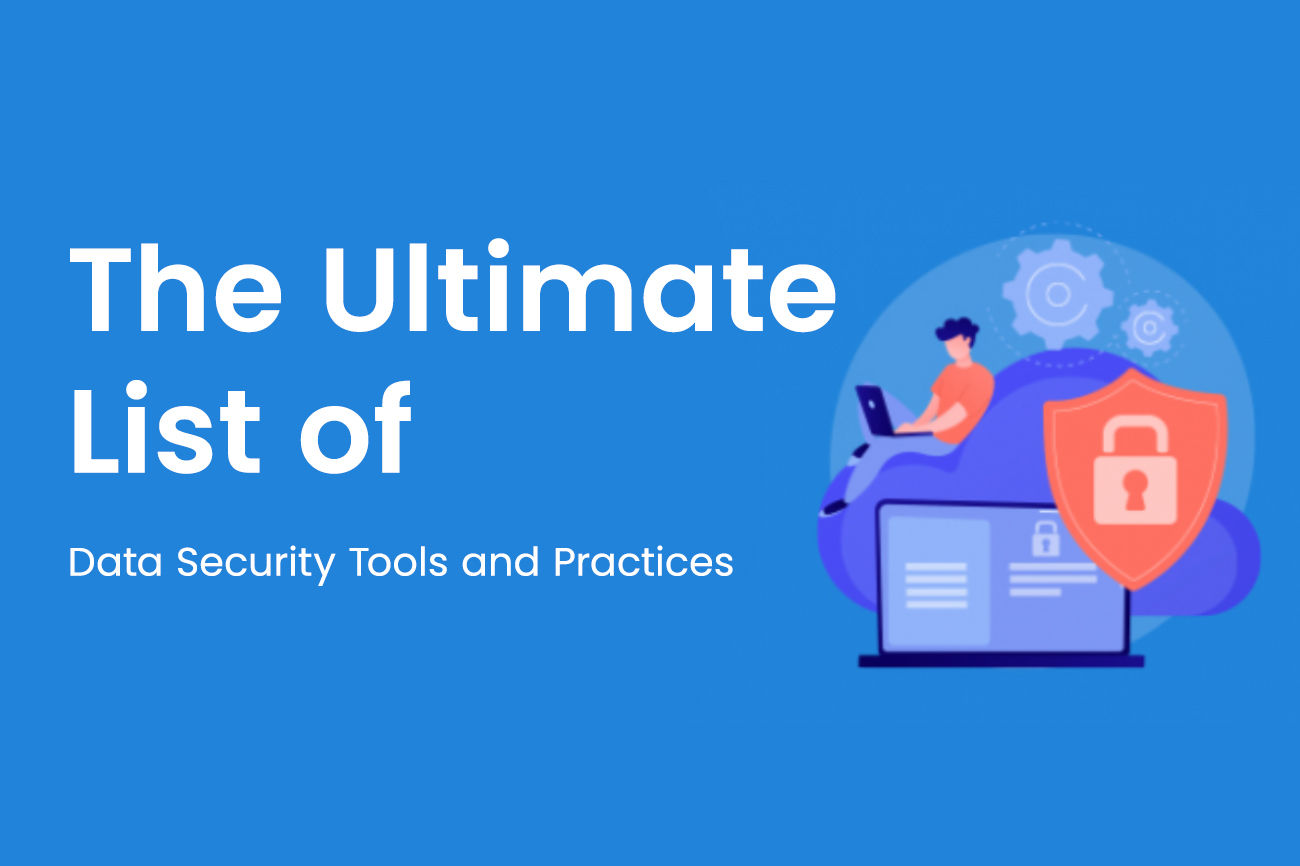
Data Security Tools and Practices for Online Safety
In the modern digital world, grasping the complexities of data security has become essential. While the internet offers immense benefits, it also poses risks to your valuable data. Consequently, individuals and businesses must employ practical tools and practices to safeguard their information.
This exhaustive guide aims to highlight the importance of data security, describe the concept itself, and present a range of tools and practices to fortify your digital defenses. By the end of this read, you can effectively protect your online assets with the necessary data security knowledge.
-
What is Data Security?
Securing your data is much like protecting cherished items in your vault; just as you would prevent unauthorized access to your crucial documents and valuables, your goal is to shield your sensitive digital information from theft, harm, or improper access.
This could include personal details, passwords, financial records, or confidential data you prefer to keep private. Using specialized techniques such as encryption and strong passwords, you can strengthen your data against cyber threats like hackers, malware, and other online risks.
-
Data Security Tools
-
-
Firewalls
Firewalls, whether physical hardware protecting whole networks or software installed on individual devices like computers or phones, function as digital security guards. They create a barrier between your trusted networks and potential threats, monitoring all incoming and outgoing traffic. Based on the rules set beforehand, they block anything suspicious or unauthorized.
-
Encryption Tools
Encryption tools function as specialized secret codes for your data. They scramble your information so that only individuals with the correct key can unscramble and comprehend it, safeguarding your data from prying eyes and hackers seeking to exploit it. Therefore, employing encryption tools is a robust safeguard to protect sensitive information from online attackers.
-
Antivirus Software
Your computer stays secure because of a protective tool known as Antivirus Software. This tool shields your computer from harmful programs like viruses, malware, and spyware and scans your system daily by identifying and eliminating potential threats. It ensures ongoing protection by regularly updating itself with the latest security measures, effectively defending against new threats as they emerge.
-
Access Control Systems
Access control systems regulate access to information by enforcing rules on how users can enter resources using methods such as passwords, security tokens, or biometrics. They assist organizations in protecting vital data, preventing unauthorized entry, and maintaining the confidentiality and integrity of their information.
-
Intrusion Detection and Prevention Systems (IDPS)
IDPS are tools that monitor networks and systems to protect data. They quickly find and respond to potential security problems or rule violations by recognizing patterns, detecting strange things, and studying behaviors. This makes organizations feel more secure about IDPS because they can stop attacks and keep data safe.
-
-
Data Security Practices
-
-
Employee Training
Training employees is essential for data security because people play a significant role. Organizations hold regular sessions to teach employees about the latest threats, phishing attempts, and safe online behavior, helping employees recognize and handle risks and lowering the chance of data breaches.
-
Incident Response Plan
An incident response plan is a way to deal with security problems and limit damage quickly. A good plan includes containment, investigation, mitigation, and communication about the incident. Organizations can reduce risks and protect sensitive data and assets by acting fast.
-
Patch Management
Keeping software secure is essential for data security. Organizations address vulnerabilities that attackers could exploit by quickly applying patches to prevent unauthorized access. Monitoring, testing, and using automated solutions are essential for keeping IT systems secure and protecting against ever-changing cyber threats.
-
Multi-factor Authentication (MFA)
MFA adds extra security beyond just using passwords. Users have to provide different types of verification to access their accounts or systems, like a password and a unique code sent to their phone or generated by an authentication app. This makes it harder for unauthorized users to access accounts, even if they know the password.
-
Regular Data Backups
Backing up data is crucial to prevent loss and reduce the risk of breaches or system failures. By consistently making copies of essential data, organizations ensure backups are available in emergencies. It's important to do these backups regularly, preferably automatically, and store them securely to avoid losing data to damage or cyberattacks.
-
In conclusion, data security is a complex area that demands attention, appropriate tools, and dedication to the best practices in data security. You can establish a secure digital setting by understanding the concepts discussed here.
Remember, the online world mirrors the offline world in many aspects. Just as you secure your physical space, you must protect your data and digital assets. Start implementing the data security tools and practices outlined here to enhance the security of your digital life. Your data is precious — safeguard it accordingly.
